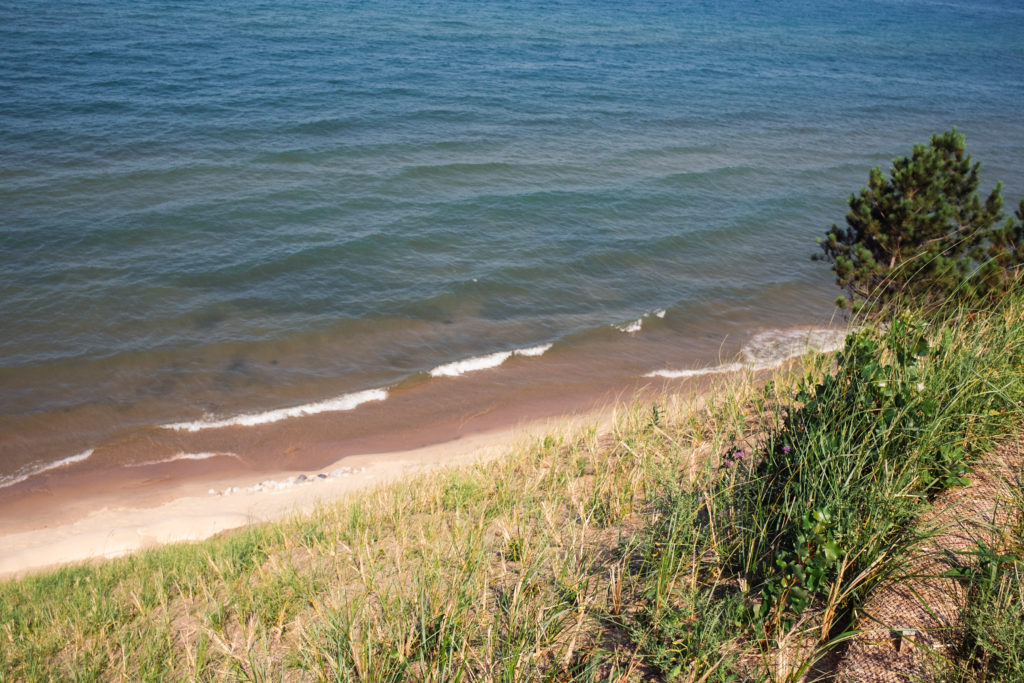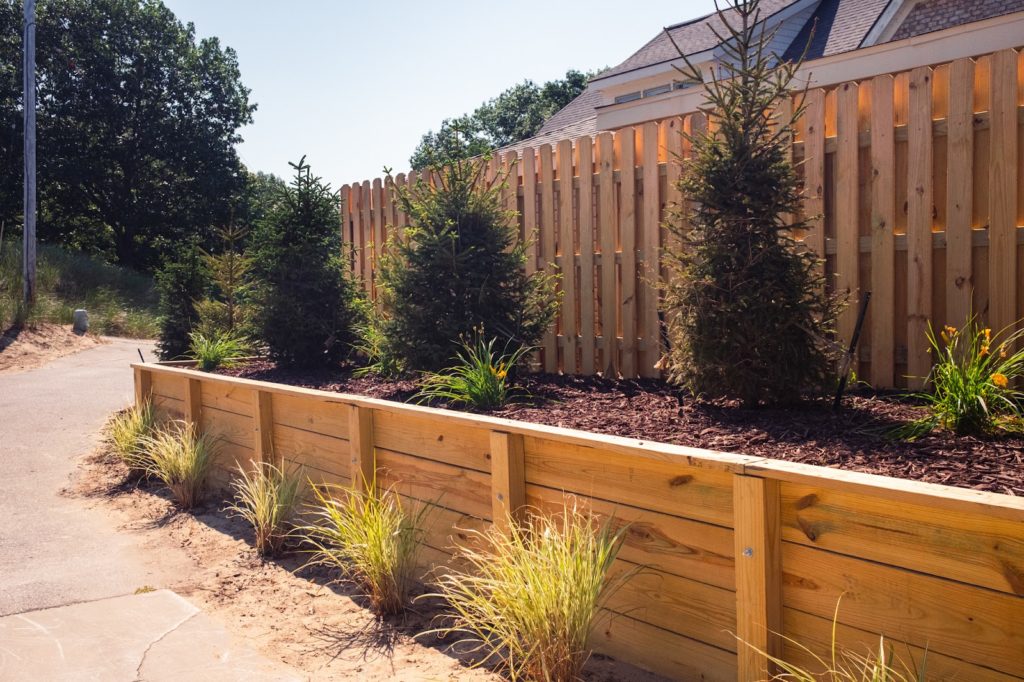Is your lakeshore property constantly threatened by wind and water’s erosive effects? While erosion is a natural process that isn’t leaving Lake Michigan’s shoreline any time soon, planting vegetation is one way that this extreme erosion can be prevented and managed. In this post, we outline how beaches and dunes become eroded, how vegetation prevents erosion, and how you can take advantage of vegetation on your lakeshore property.
Water and Wind Erosion
Your beach can erode both by natural forces like water and wind and even by human influence like foot traffic and off-road vehicles. Erosion takes place in three key ways:
- Detachment: If your sand is not held in place by a vegetation root system, the top layer becomes easily displaced by water and wind erosion.
- Movement: As soon as your sand becomes displaced from your dunes, your dunes are susceptible to movement, resulting in sand loss and even dune collapse.
- Deposition: After these sediments and sand are carried by wind or water, they are then deposited in a new location.
When your beach has little to no foliage or vegetation, there is a higher likelihood of worse erosion both by wind and water.
Explore Erosion Control Measures and When to Take Them.
Wind
Wind along the lakeshore has the ability to displace fine grains of sand. This may seem like a small thing, but on a large scale, the wind has the ability to change the shape of your entire beach! Strong winds will carry away the top layers of your beach until they reach a windbreaker—and if you don’t have one, your sand can be displaced at an alarming rate. This is why vegetation like dune grass is so valuable to have on your property. Even the type of grass or vegetation will affect its success at sand retention and erosion protection. Planting the right native vegetation will slow the speed of the wind and help keep your sand deposited on your own property.
Water
When you think of lakeshore erosion, erosion by water is usually the first thing you might think of. The Great Lakes border over 3,000 miles of Michigan, constantly eroding away at its shores. Michigan has many high-risk erosion areas (HREAs) due to these lakes pulling sand away from the shore with extreme force. While the Lake Michigan waves are a large contributor to water erosion, water also erodes in the form of rain, groundwater, increased lake levels, and more. Vegetation aids in water erosion protection by absorbing some of this water into the soil and keeping the soil together underground so that it is less likely to be taken away by the force of the waves.

How Vegetation Helps—Erosion Control & Slope Stabilization
Can vegetation stop erosion? Yes—planting vegetation is one of the most natural, effective methods for keeping your beach and dune sand safe from wind and water erosion. Vegetation combats erosion in these key ways:
- Vegetation slows water runoff. Because beach/dune grass absorbs water, planting these types of vegetation reduces water runoff erosion. Beach/dune grass also helps break the waves’ impact and slow water flow from storm surges.
- The root systems keep the underlying soil together. Vegetation works below the surface of your beach to hold the underlying sediment together, reducing the risk of sand and soil displacement. This is why vegetation is one of the best erosion control methods for steep slopes and dunes!
- Vegetation acts as a wind barrier. The wind is a strong force that easily displaces sand with no windbreakers. Planting vegetation will slow that wind from taking the top layer of your beach or dunes with it.
All of these ways also apply when vegetation is planted for slope stabilization on your dunes. By providing root strength and absorbing water flow, vegetation can prevent dune slumpage and collapse. If you’ve ever pulled up a clump of dune grass, you see how tightly it keeps the soil together under the surface! On a large scale, this sand anchoring is crucial to keeping your dunes stable and unmoved.

How Vegetation is Installed
So how can you take advantage of vegetation’s benefits for your lakeside property? Start with light debris removal and planting beach and dune grass!
In areas with clay soil, hydroseeding is a smart option to begin vegetation growth. Hydroseeding applies a seed mix using a blower truck to evenly coat the area with fast-growing seed blends that will quickly start the process of erosion prevention.
Team up with us and our hydroseeding partners for vegetation on your property.
Another method for effective vegetation establishment is by using erosion control blankets or straw mats. Typically erosion control blankets are used on steep slopes or dunes where there is no existing vegetation or foliage. They are rolled down the slope or dune, secured in place, and planted over with dune grass seed. Erosion control blankets are so effective because they are sturdy enough to hold sand in place while being porous enough to promote seed growth and water absorption.
See how erosion control blankets work.

Professional Vegetation Installation
Proudly serving Michigan’s land and lakeshore community, our goal is to prevent natural erosion and weather-related circumstances from harming your land. If your shoreline property suffers from erosion, ask us about vegetation for your beach today.
While beach grass and dune grass can be installed for erosion control purposes, we also specialize in decorative vegetation like beach grass, shrubs, and retaining wall plant beds. Let us know how we can restore not only the looks but the longevity of your property with vegetation!

